A Romp Through ‘The White Lotus,’ Season 2’s Wild Opening Credits
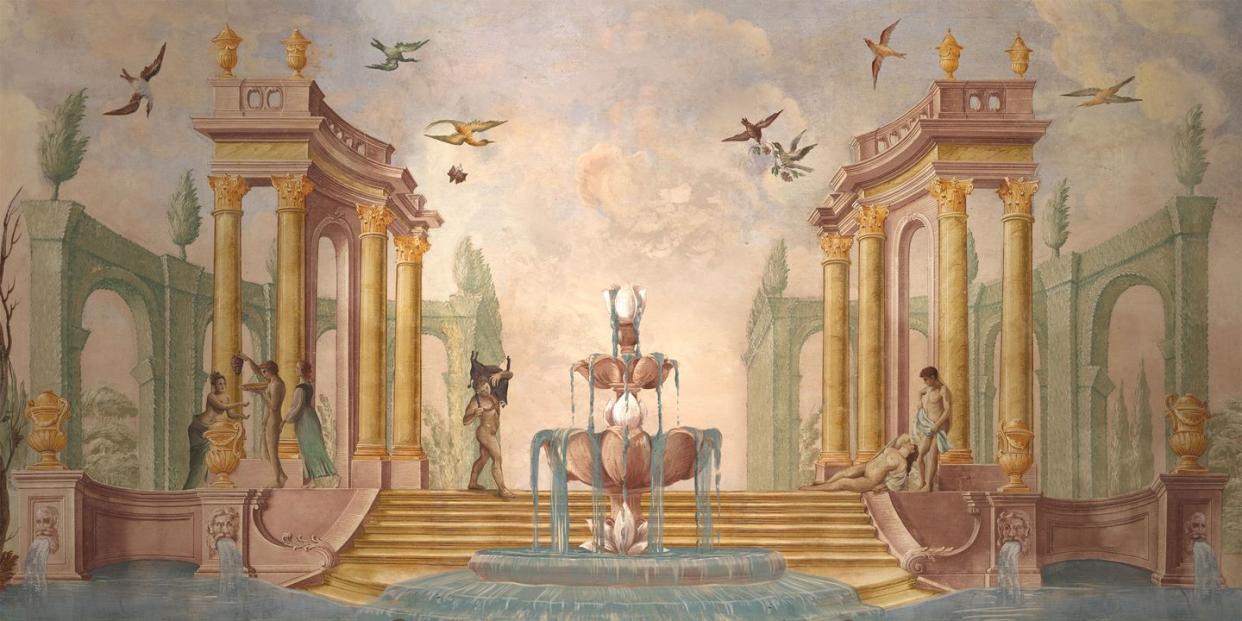
You only need to watch the 90-second opening credits of The White Lotus, Season 2 to realize you’re in for a wild ride. Couples flirt, fountains erupt, monkeys deliver some serious side eye—and, wait, is that two fishermen in flagrante back there?— all within a blink-and-you’ll-miss-it succession of intricate trompe l'oeil frescoes. Of course, we wouldn’t expect anything less of its creators, the Seattle-based studio Plains of Yonder, who also created the deliciously vivid wallpaper intro for the series’ first season. And remarkably, they were given essentially a carte blanche from the show’s director, Mike White. “We were told it was a ‘bedroom farce with teeth,’” says Katrina Crawford, who heads the studio with her husband Mark Bashore. And from the script, “We could see that it was more about sexual politics this time, instead of race and colonization like in Season 1.”
So how do you pack all that into a mere a minute and a half? Crawford and Bashore, with the help of illustrator Lezio Lopes, looked to the decor of a real-life Sicilian villa to dream up a feverish allegory for The White Lotus resort, replete with hidden meaning, art historical references, and, yes, murderous mischief. Here’s how they did it.
The Drawings Are Inspired By a Real Villa…That You Can Stay In
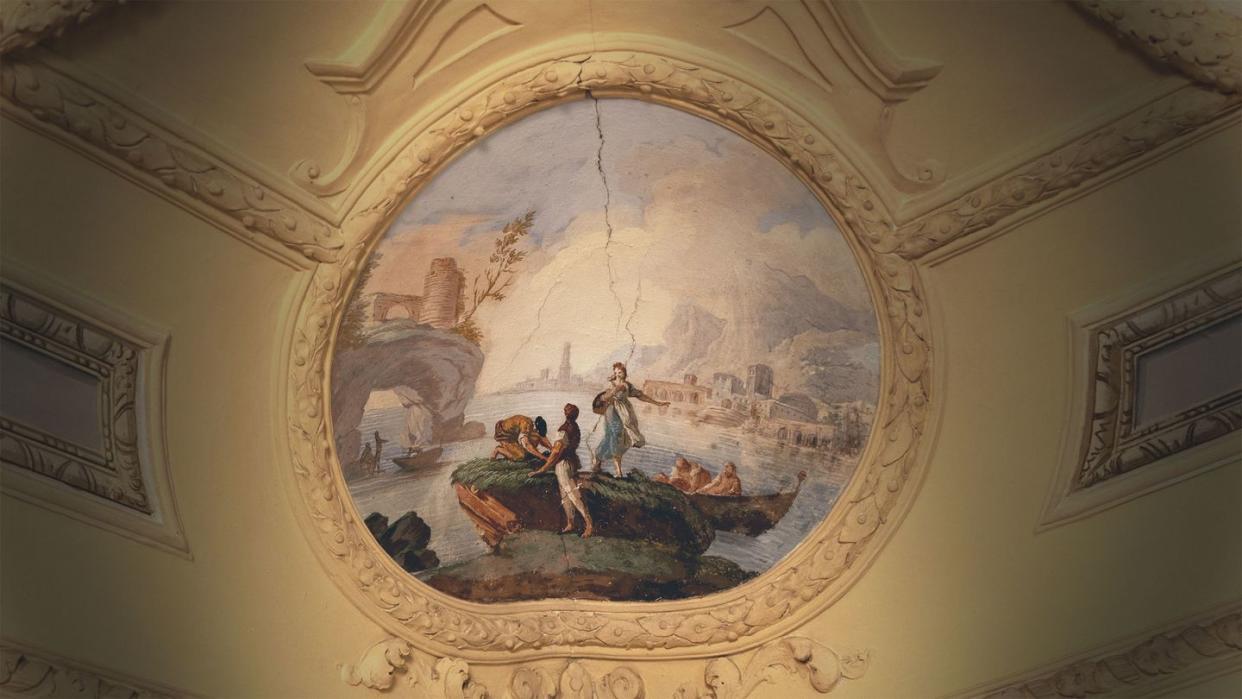
Before the Plains of Yonder team got to work, Crawford paid a visit to Villa Tasca, a sprawling 500-year-old Palermo estate-turned-hotel with grand, fresco-covered rooms (Wagner is said to have composed portions of Parsifal in the music room). With a photographer, Crawford spent two days documenting each trompe l'oeil vignette and decorative moulding to use as material for the credit sequence. “There was a lot of awe,” Crawford remembers. “I'd never seen this many frescoes in one place.”
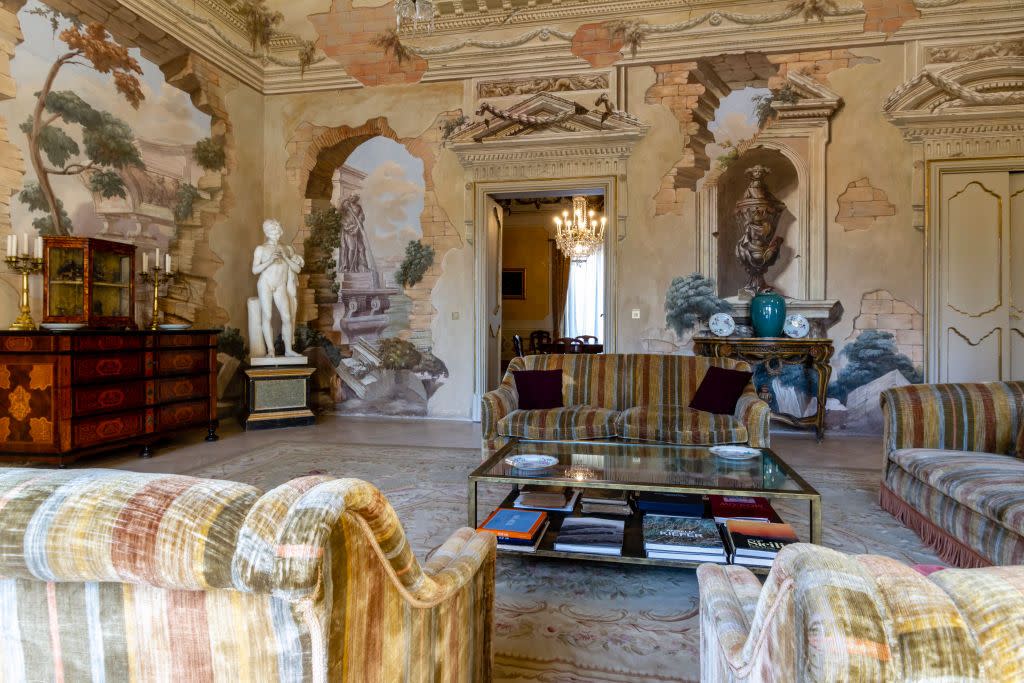
With this visual scrapbook, which captured everything from fountains to fishermen to follies, she returned to Seattle and began conceptualizing the painterly sequence with Bashore and—their secret weapon—their art student son. “We knew we had the bones of it from the existing artwork, but we had to completely rebuild them digitally, and take stories away and add stories back in,” she says.
In some cases, that meant recreating, say, an elaborate pastoral scene, but copy-and-pasting characters from elsewhere in the villa, or incorporating entirely new “digital trompe l'oeils” drawn by Lopes to create humor, allegory, or something naughtier. “If you went to the villa, you could do a scavenger hunt and be like, ‘Oh, here's this staircase but over here is where the horse came from,’” Crawford says, “Everything's a hybrid.”
It May Be 90 Seconds, But The Credits Are Melodrama in Three Parts
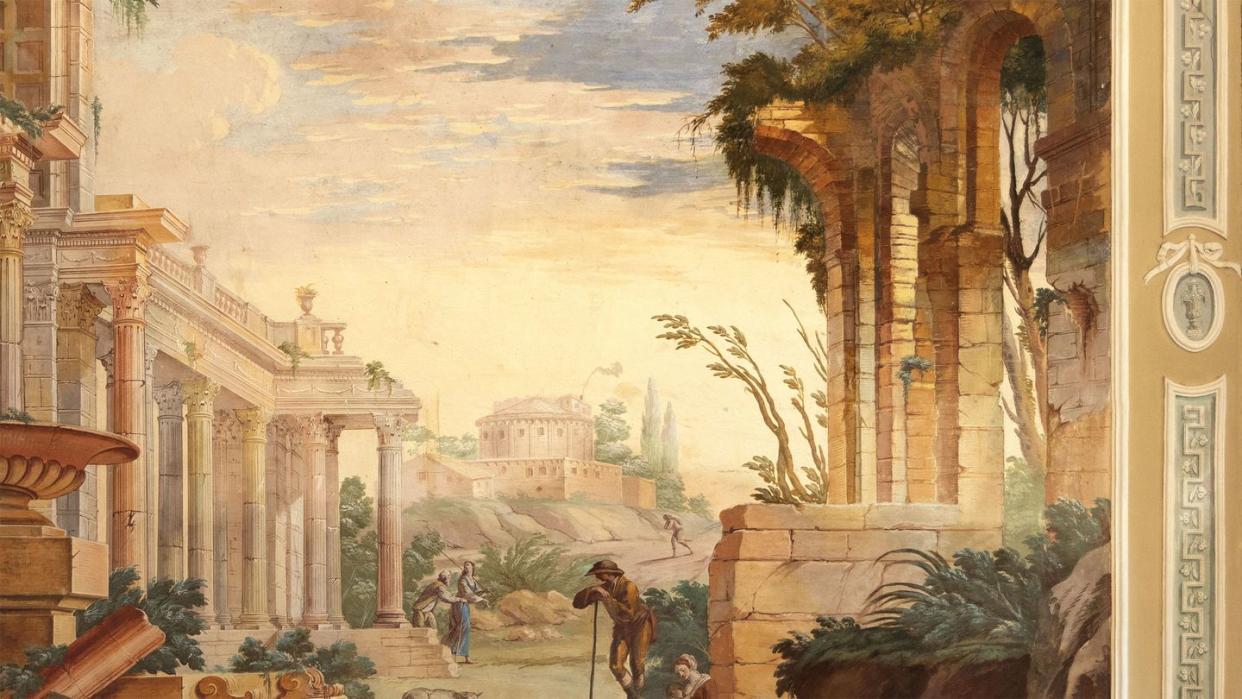
Viewers will notice that the credits become increasingly, well, intense. And that was intentional, according to its creators. “We sort of saw it as three chapters and the music splits it,” Bashore says. At first, the sequence begins with serene scenes—a woman in an elaborate gown curtsies, another gazes longingly from a tower at her pet monkey, cherubs cuddle. But a telling cut to a cracked ceiling panel—and the introduction of the series’ warbling theme music—proves that there is more in store.
Painted birds fight mid-air, a smug-looking cat carries a dead bird in its mouth, and—gasp—an adult man is caught breastfeeding. “Then it really falls off the rails,” Bashore says gleefully. Cue a “sweaty dance beat,” a burning building, jarring cuts to various people and critters fornicating, a dagger falling from a hand, and plenty of other Hieronymus Bosch-inspired madness. “If you're looking for sex, you can find it almost anywhere in the [source] imagery—in a dog or a piece of architecture,” Bashore explains. “You start to see things and stories start to form.”
“In a great show or a great image, everybody sees a little bit of themselves,” he adds.
Watch For the Hidden Clues
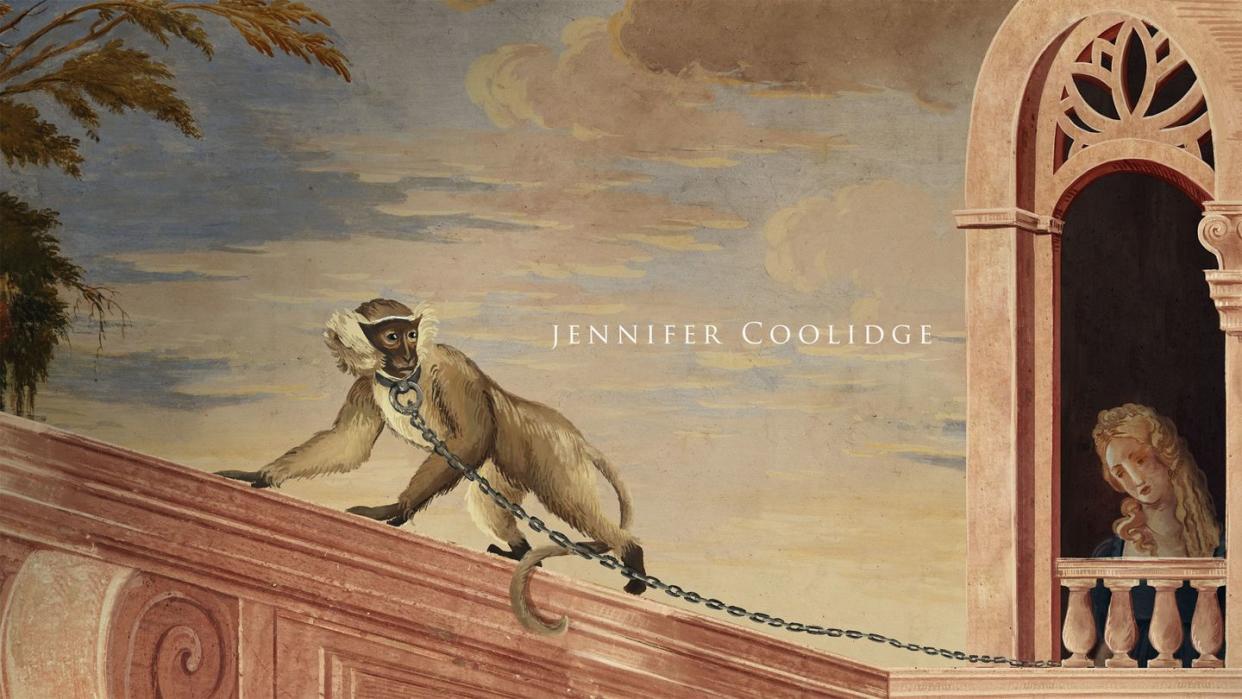
Even though only one episode has been released so far, Bashore and Crawford wove telling clues about each character into the images accompanying their credits. “The whole thing has allegorical layers of meaning,” Crawford says. “Whether it's an editing credit or an actual star of the show.”
Jennifer Coolidge’s credit, for example, is filled with nods to her character, Tanya. In the scene, a woman in a tower gazes out at a monkey trying to escape into a “more wild and free situation,” the creators say (though no spoilers here!). Sabrina Impacciatore, who plays The White Lotus’s irascible manager, gets a scene of a toga-clad woman scolding a pair of lounging ladies. And costume designer Alex Bovaird’s hat tip appears as an elaborately-clad monkey riding a goat. (“My favorite shot in the whole thing,” Bashore says). But the creators want the viewers to connect the dots too. “It’s open to interpretation,” Crawford says.
As for those wild boars? That was a playful addition on behalf of the creators. In fact, there was supposed to be a final piggy roasting on a spit in one of the final scenes, but they ultimately scrapped it. “I don’t know what it all means,” Bashore jokes.
The Details Are Endless
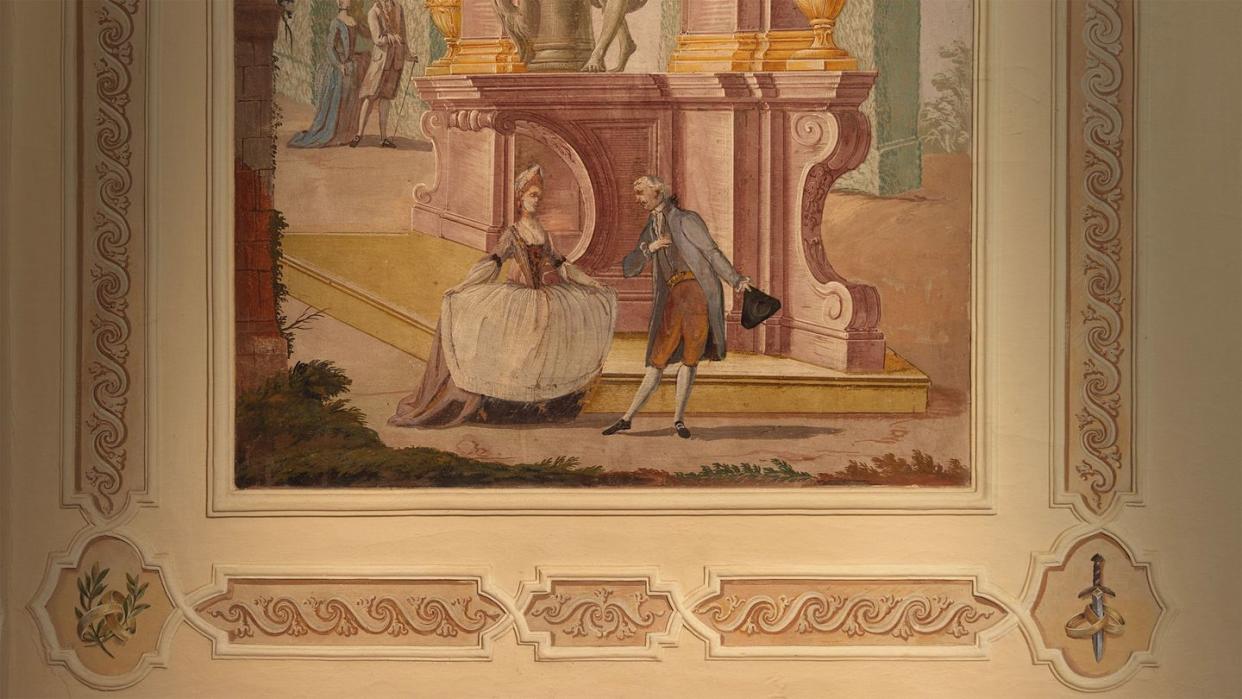
“Mark’s writing is so detailed and so precise that it felt important to be just as detailed,” Crawford notes. That meant adding little hints wherever possible, from white lotuses floating in a fountain, to tiny, symbolic images, to the texture of the mouldings. “The plaster work [in the villa] is gorgeous,” Crawford said. “It's 3D, it's coming out into the room. We worked really hard to capture that depth and complexity.”
Incredibly, the pair didn’t see a rough cut of the show until their work was virtually finished. “You spend seven months working on this tiny little world. And you want to do honor to all the people's work. So actually, when we watch it, we are holding our breath,” says Crawford.
Says Bashore, “We probably could have gone for another six months because it's just fun.”
You Might Also Like
